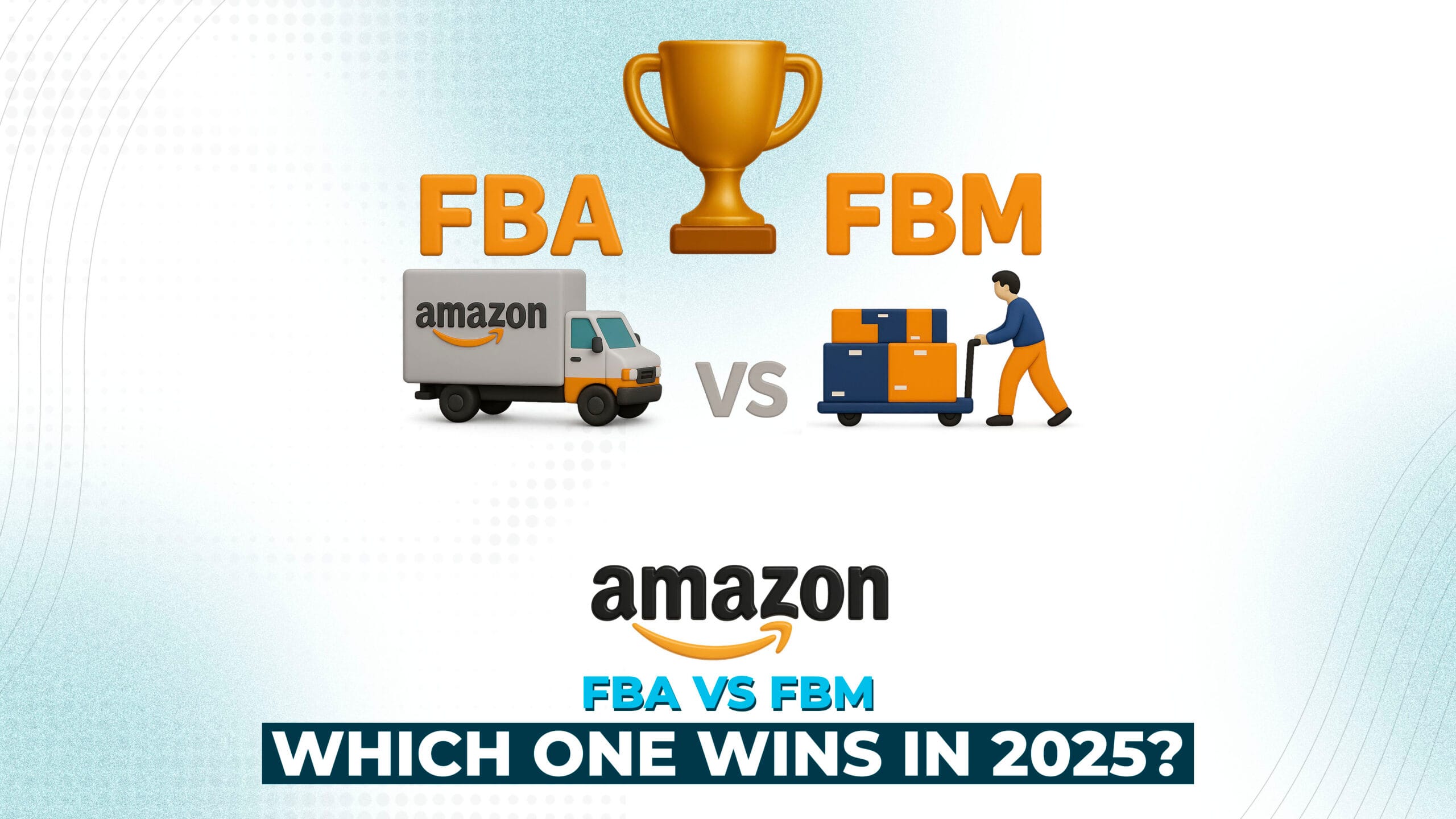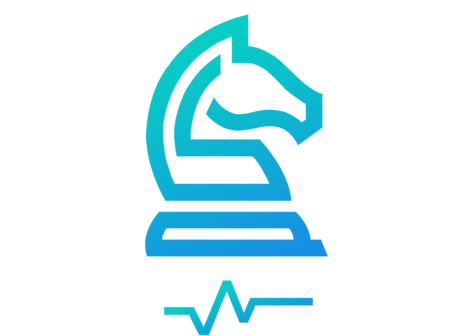In 2025, Amazon FBA dominates the market, but deciding between FBA and FBM involves key considerations beyond costs. You need to choose whether to rely on Amazon for fulfillment, handle shipping yourself, or work with a third-party logistics (3PL) provider. Each option has its benefits, and making the right choice is crucial for your business’s success.
This guide clearly compares Amazon FBA vs. FBM and 3PL side-by-side, helping you choose the smartest fulfillment strategy based on your budget, goals, and growth stage. For more context on fulfillment mistakes, read 10 most expensive mistakes new Amazon sellers make.
What Is FBA, FBM, & 3PL? (Quick Breakdown)
Let’s start simple. There are three main ways to fulfill Amazon orders, and each works best in different situations.
FBA (Fulfilled by Amazon)
FBA is Amazon’s all-in-one fulfillment service. You send your products to an Amazon fulfillment center, and they handle everything from storage and picking to packing, shipping, and customer returns. This option is best if you want automation and access to Amazon’s fast Prime shipping network. With FBA, you focus on sales while Amazon manages the logistics. Learn more from Amazon’s official FBA overview.
FBM (Fulfilled by Merchant)
With FBM, you list your products on Amazon but fulfill the orders yourself. This means you’re responsible for storing inventory, packing orders, and shipping them to customers. FBM can work well for sellers who have in-house fulfillment or want more control over packaging and branding. It also allows more flexibility with custom inserts and handling specific shipping preferences. Learn more on Amazon’s FBM Help Page.
3PL (Third-Party Logistics)
A 3PL is a non-Amazon company that stores and ships your products for you. These providers often integrate directly with Amazon to fulfill FBM orders or support FBA restocking. 3PLs are useful when you want to outsource fulfillment without relying entirely on Amazon. They’re especially helpful for sellers managing inventory across multiple sales channels, such as Walmart, TikTok Shop, and Shopify. Read more in Shopify’s 3PL guide.
Cost Breakdown: What’s Cheaper in 2025?
In 2025, costs have changed across all fulfillment models.
Amazon FBA fees have increased. Inbound Placement Service charges, storage surcharges, and return handling fees are higher than ever. However, you get benefits like fast shipping and customer service. For the latest FBA fee updates, check Amazon’s official 2024–2025 FBA fee changes.
FBM costs are rising too. USPS and carrier rates went up, and if you’re fulfilling orders yourself, you’ll spend more time packing, labeling, and managing returns. Learn more from USPS Pricing and Rate Changes.
3PL pricing can be more affordable for larger or bulky items. You pay for storage, pick-and-pack, and shipping, but you often save compared to Amazon’s peak-season storage costs. Some leading 3PLs provide dynamic rate tools and volume-based discounts, making them competitive alternatives.
“I profit more on FBA now. USPS rates have gone up so much… It used to be even.” -Reddit user.
Pros and Cons of Amazon FBA
Pros of FBA
- You get the Prime badge, which helps win the Buy Box
- Amazon handles returns and customer service
- You can scale faster and automate your operations
Cons of FBA
- You have less control over your inventory
- High storage fees if products move slowly
- During Q4, restock limits and delays can be frustrating
“If you’re scaling, FBA gives feedback protection and Prime visibility.” – Reddit user.
Pros and Cons of FBM + 3PL
Pros of FBM and 3PL
- You control packaging, branding, and inventory flow
- 3PLs help you fulfill larger items, slow movers, or seasonal products
- Some 3PLs match Prime speeds and have lower fees than FBA
Cons of FBM and 3PL
- Without Seller Fulfilled Prime, you lose the Prime badge
- You must handle returns and support
- 3PLs need setup time, and not all integrate smoothly
“I use FBM to test products. If they flop, I’m not stuck with FBA storage fees.”- Reddit user.
When to Use Amazon FBA, FBM, or a 3PL
Choosing the right model depends on your situation. If you’re just starting on Amazon, FBA is often the best way to gain traction quickly. For deeper insight, you can also explore our guide on whether Amazon FBA is still worth it in 2025. It gives you access to Prime shipping and lets Amazon handle most of the heavy lifting.
If you’re testing a risky or unproven product, using FBM or a 3PL is a safer option. This way, you won’t lock up inventory in Amazon’s warehouses and won’t be hit with storage fees if the product doesn’t sell.
When scaling a best-selling item, FBA still shines. The speed, automation, and Prime visibility help drive more conversions and let you focus on growth. For oversized, seasonal, or slow-moving inventory, FBM combined with a 3PL often makes more sense. You’ll save on storage fees and maintain flexibility.
If you run a brand that sells on platforms like Walmart, TikTok Shop, or your own Shopify store, FBM and a 3PL can centralize your inventory and fulfill orders from every channel. Lastly, if you want to avoid FBA restock limits during Q4 or major sales events, using a 3PL as a buffer to feed inventory into FBA can help you stay in stock without overpaying on storage.
Why a Hybrid Strategy Wins in 2025
Most experienced sellers in 2025 are no longer sticking to just one fulfillment method. Instead, they combine Amazon FBA with 3PL or FBM to create a flexible and cost-effective strategy that gives them the best of all worlds.
A hybrid approach allows sellers to use FBA for their top-performing SKUs—those products that sell quickly and benefit from Amazon’s Prime badge and logistics. At the same time, they can use FBM or a 3PL to test new products or manage slower-moving inventory without the risk of incurring high storage fees. If you’re considering launching a new store, our article on Amazon dropshipping profitability in 2025 provides more perspective.
Sellers also rely on 3PLs to restock FBA more affordably and quickly, especially during high-demand periods like Q4. Additionally, using a 3PL makes it easy to fulfill non-Amazon orders from platforms like Shopify, Walmart, and TikTok Shop, all from the same inventory pool.
By combining these methods, sellers gain more control, reduce fulfillment risk, and protect their profit margins across all sales channels.
How to Build a Fulfillment Strategy That Works
To succeed with a hybrid strategy, start by identifying your best-selling products and shipping those via FBA to maximize reach and Prime eligibility. Next, use FBM or a trusted 3PL to handle low-volume, seasonal, or oversized items to save on fees and remain agile. Finally, look at the bigger picture, coordinate your inventory across platforms like Shopify, Walmart, and TikTok Shop to centralize fulfillment and improve your cash flow.
The best fulfillment strategies aren’t one-size-fits-all. They’re designed around your product mix, your customer expectations, and your goals as a business owner.
Which Fulfillment Model Should You Choose?
If you want to grow fast and win the Buy Box, go with Amazon FBA.
If you want control and lower risk, start with FBM or 3PL for new products.
If you’re ready to scale, build a hybrid model using FBA for what sells best and FBM + 3PL for everything else. Also, consider comparing private label vs wholesale selling models to choose the best path for your product.
Here’s a simple path:
- Start with FBA
- Use FBM or 3PL to test new ideas
- Combine both for long-term growth
Want professionals on your side?
Not sure whether FBA, FBM, or 3PL is best for your business?
At Brand Aventus, we help Amazon sellers build smart, scalable fulfillment strategies that balance speed, cost, and control.
Whether you’re just starting or already scaling, we’ll help you choose the right mix of Amazon FBA, FBM, and vetted 3PL providers.
Book your free strategy call today and take the guesswork out of fulfillment.




